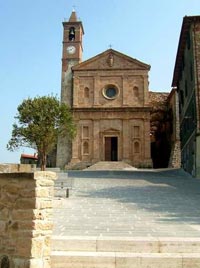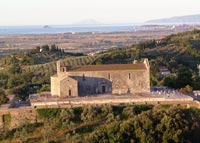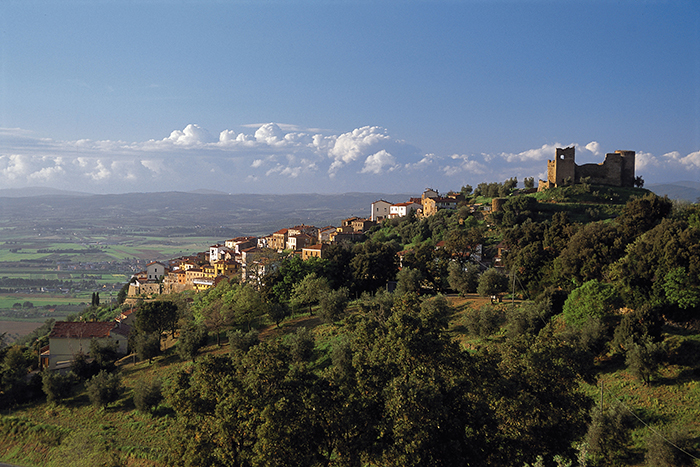 |
Scarlino |
|
| Situated amongst a panorama of immense beauty and great environmental interest, Scarlino, small but definitely extraordinary, rises on one of the slopes of the Monte Alma, and is seen as a small jewel of art and culture. |
| Scarlino Castle in the Grosseto region of Tuscany acted as a stronghold against enemies and pirates landing at nearby cities. Poggio Tondo is a hill covered by dense Mediterranean scrubland. The necropolis of Poggio Tondo, which rises up out of the valley Alma in the territory of Scarlino, is datable to between the mid-seventh and the mid-sixth century B.C and pertains to a settlement which was under the rule of Vetulonia. At present four tombs from the necropolis are visible. “La Tomba del tamburo” “La Tomba del Carro” “La Tomba del Cippo” “La tomba delle Due Porte, ”the Etruscan farm, a building still little known in etruria. The Centre for the territorial documentation in Scarlino, piazza Guelfi, presents the exibition “The Etruscans in Scarlino” with the most significant finds of the tombs and educational displays.
At Puntone di Scarlino the modern yacht harbour, which is also the perfect starting point to visit the faunal oasis of more than 700 ha of coastal scrub-land, where are still living undisturbed roe deers, wild boars, badgers and porcupines. The Bandite di Scarlino can only be reached on foot, by bike or on horseback along well-marked trekking routes. |
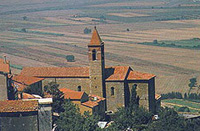 Chiesa di San Donato Chiesa di San Donato
|
|||
| Inside the Follonica Gulf, in the Bandite di Scarlino reserve, which is divided by a small promontory from Punta Ala, among a multitude of small caves, you will find Cala Violina. The beach's name derives from its very rare characteristic (it appears there is only one another beach with such a peculiarity) by which, steeping on the sand, the latter will echo back the harmonious notes of a violin. Cala Violina has been rewarded from Legambiente as one of the 11 most beautiful beaches of Italy. Comune Scarlino
|
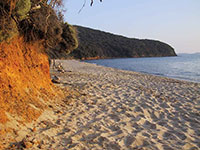 Cala Violina Cala Violina |
|||
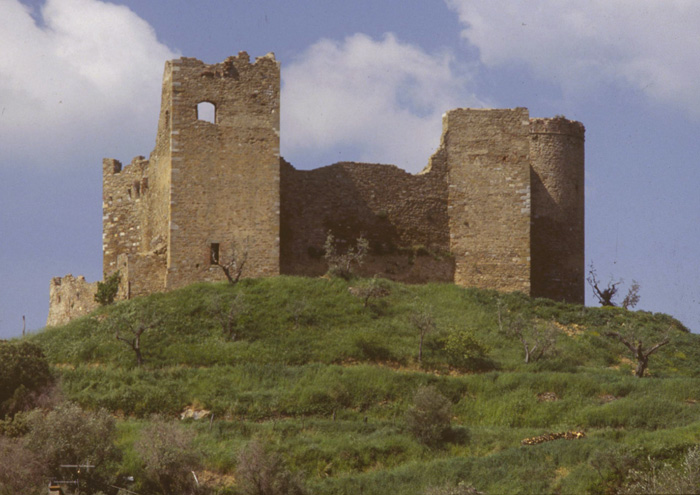 |
||||
| Scarlino, castel |
||||
|
|
||||
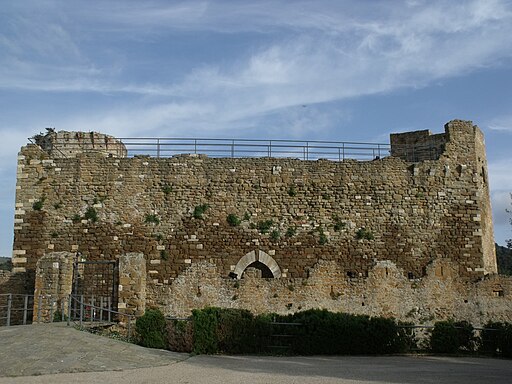 |
||||
Rocca Scarlino |
Rocca di Scarlino
|
Rocca di Scarlino |
||
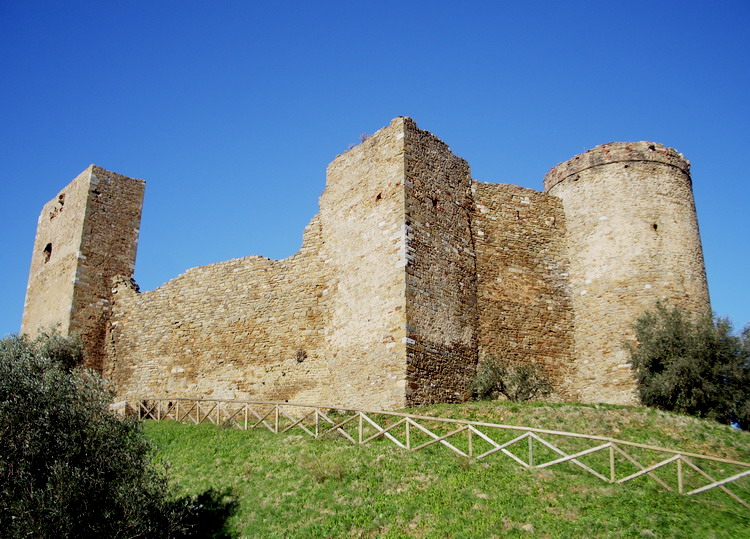 |
 |
 |
||
| Gavorrano |
||||
| The medieval center of Gavorrano rises on the side of Mount Calvo in the heart of the Grosseto Maremma with a splendid view of sea and hills. Gavorrano was founded in the 11th century as a possession of the Bishop of Roselle. Main sights are remains of Castel di Pietra ("Stone Castle"), built by the Count Nello of Pannocchieschi. This castle passed to the legend because it was the place where Pia of Tolomei, Nello's second wife, was murdered by her husband. She died in the Castello di Pietra. The great Italian poet Dante Alighieri remembered that event in his Divine Comedy (Purgatory V: “Siena mi fè, disfecimi Maremma ” “Siena gave me life, Maremma took it away”). The tragic story of the noble woman from Siena is re-enacted every year - usually on the first Sunday of August - in the festival called "Il Salto della Contessa", the "Countess' Leap". The re-enactment is presented in medieval costume, with parades, flag throwers, a horse race and a theatrical representation of the Countess' murder at the hand of her husband, Nello dei Pannocchieschi. Map Gavorrano url |
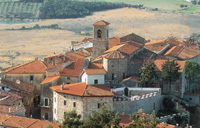 Gavorrano Gavorrano |
|||
| Caldana is a frazione of Gavorrano. Main sights are the Church of San Biagio and the Oratorio di Sant'Antonio da Padova. Caldana is situated on a hilltop surrounded by luxuriant olive trees, a few kilometres from Gavorrano; it has retained the features of an early medieval village. The town is built within the formidable walls of the castle. With its quadrangular shape, it preserves its 16th-century appearance, including four-cornered bulwarks and sloping foundation, directly upon which the structures of homes lean. Divided by three parallel streets that merge into the small centre opposite the Renaissance church of San Biagio, this ancient village safeguards a network of cellars connected to each other by underground passageways, open to the public on special occasions. The Chiesa di San Biagio is located in the main square of Caldana, facing onto a spacious panorama. The churchis one of the few examples of a holy Renaissance building in the Maremma area. Behind the main altar, a fresco depicting St. Blaise and St. William stands out against the luminosity of the wall. It was painted by Giuseppe Nicola Nasini. The Nasini family were painters originally from Castel del Piano who worked mainly on Mount Amiata, between the 1700s and the second half of the 1800s. They were very prolific artists and it can be said that there is no church, oratory or small chapel in this territory that does not have one of their paintings.
Campiglia Marittima, a typical medieval village, with its narrow streets and the houses all gathered around the castle, has a very ancient history.
|
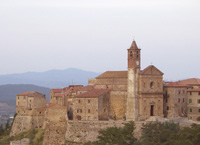 Caldana Caldana
|
|||
|
||||
|
 |
| Podere Santa Pia, with a magnificent panoramic view of the Mediterranean Sea is a peaceful retreat, perfect for relaxing and enjoying the splendor of the Maremma hillsides that rise up from southern Tuscany, with a view
up to Montecristo and Corsica
|
Scarlino borders Castiglione della Pescaia, Follonica, Gavorrano and Massa Marittima. Il Puntone and Scarlino Scalo are frazioni of Scarlino . |
|
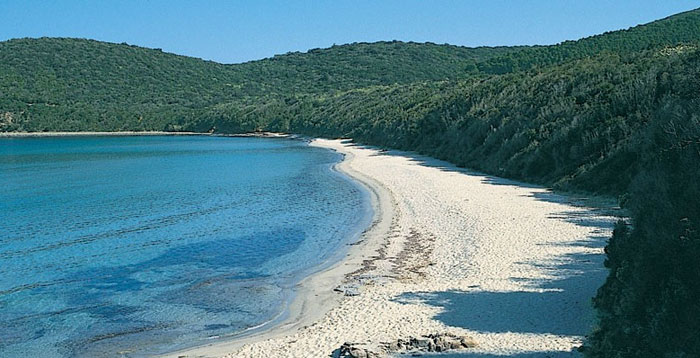 |
Cala Violina |
Follonica is situated in the centre of a fantastic gulf which stretches from Piombino to Punta Ala. There are beautiful beaches and an unpolluted sea. Walking in Tuscany | A walk close to the sea, towards Cala Violina and Cala Martina
|
 |
| GR Punta Ala - panorama, 1962, Collezione cartoline Albertomos |



